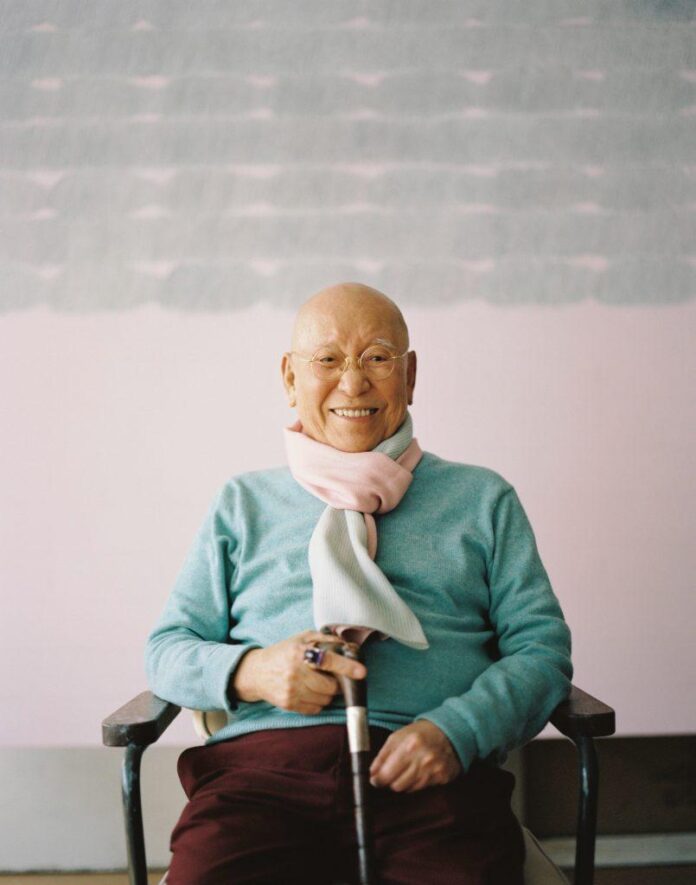Park Seo-Bo, the South Korean-born artist and leading figure in the country’s monochromatic Dansaekhwa movement, died on Saturday, October 14th, at the age of 91. The cause of death was lung cancer, reports the .
“It is with sadness that we learned of the death of the artist Park Seo-Bo,” his gallery, Perrotin, said in an announcement. “Like the Korean scholars and Buddhist monks who saw writing as a purifying process, Park Seo-Bo saw painting and the repetitive gesture from which his monochromes emerged as a catharsis. His unique and sensitive work is collected by some forty prestigious European, Asian and American institutions.”
Park was born in 1931 in North Gyeongsang and grew up under Japanese colonial rule. He was part of the first wave of artists to emerge after the Korean War, later becoming a foundational force in the country’s minimalist Dansaekhwa group. He would go on to find global acclaim, exhibiting his work internationally across Asia, Europe, and America. His pieces are in the collections of major global museums including the Pompidou Center in Paris, the Museum of Modern Art in New York, the Guggenheim Museum in New York, the Museum of Contemporary Art in Tokyo, and the Seoul Museum of Art.
Park grew up the third of eight children, and long had a desire to become an artist. He enrolled to study at the Hongik University in Seoul but his studies were interrupted in 1950 when he was drafted to serve in the Korean War. He later studied in Paris as part of a UNESCO-funded scholarship program. It was there he became an active member of the Korean Informel movement, which sought to challenge Western painting ideologies that were favored by Japanese forces in Korea, moving toward abstract images.
But it was later, in the 1970s, that he started to drift toward the more meditative, reductive aesthetic that would later be classified as Dansaekhwa, or “Monochronism,” though that is a title that was given retroactively and the group has no formal manifesto. “For me, painting has become a mere tool and method to cleanse and purify myself,” he told the in 2008. His works were often made using small, repetitive strokes, yielding broad, textural grooves in creamy gradations of a single color.
Park had found success throughout his life, but a 2015 Venice Biennale show on the Dansaekhwa artists helped bring him to an even wider audience. In March of this year, with the help of Perrotin, he broke ground on a museum dedicated to his work on South Korea’s Jeju Island, to open next year. He is survived by his wife and three children.
“I think of my paintings like monks praying in a Zen garden,” he said in an interview with the in 2006. “While the process may be technically arduous, the overall concept is very simple. I have been doing this work for many years, since the late sixties. Even if I have the same idea, the circumstance of the paintings has changed as time has passed. In the seventies, my paintings were like a boy, then in the eighties he got married, and had a family, and eventually he went on to have a grandson.
“What I mean to say is that my circumstances have changed since I began, and that means I have also been changed. So even though I have no intention to change, I have discovered that I have changed over time.
“It’s inevitable,” he said.

























